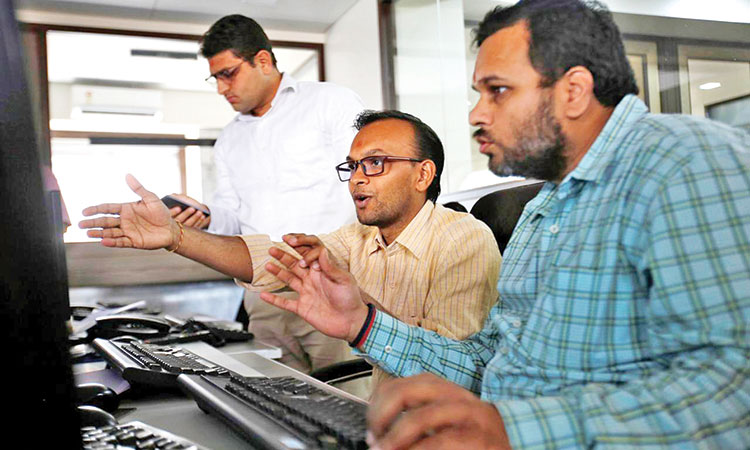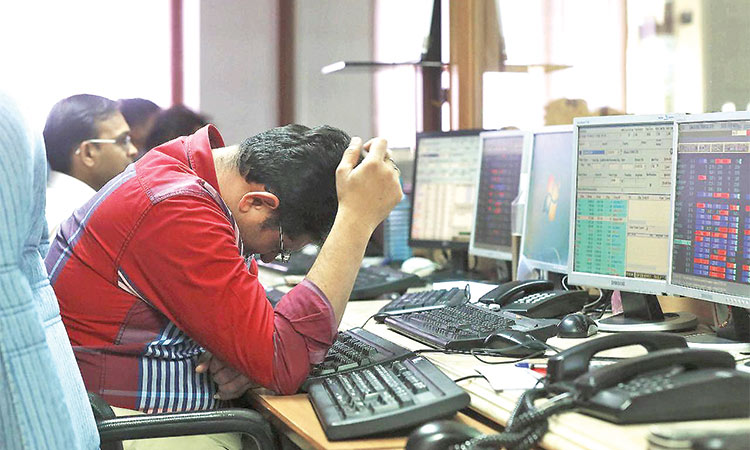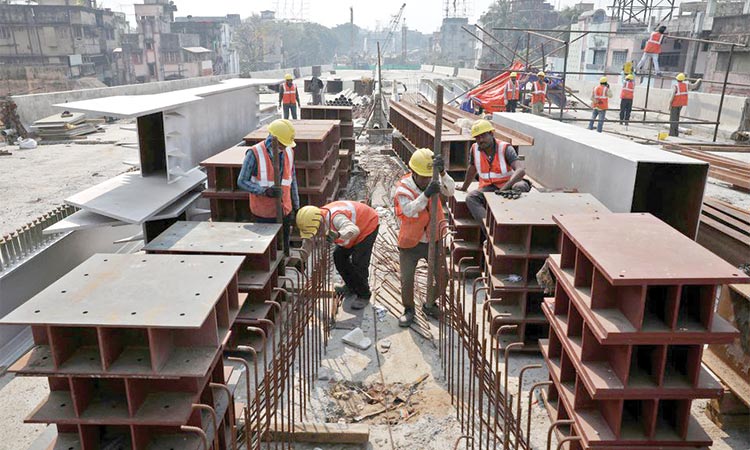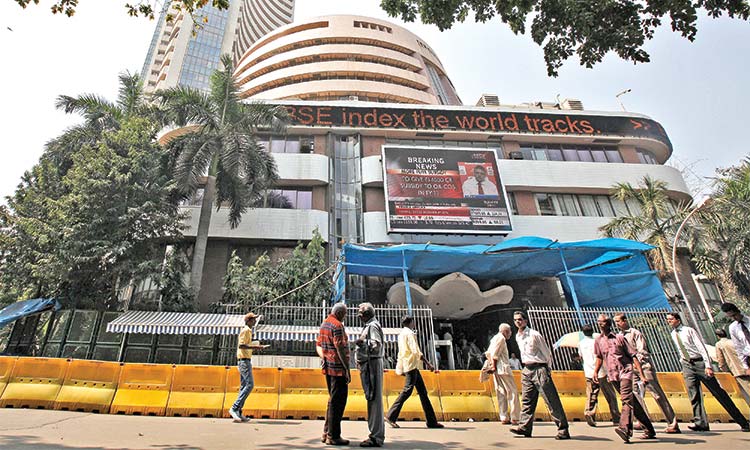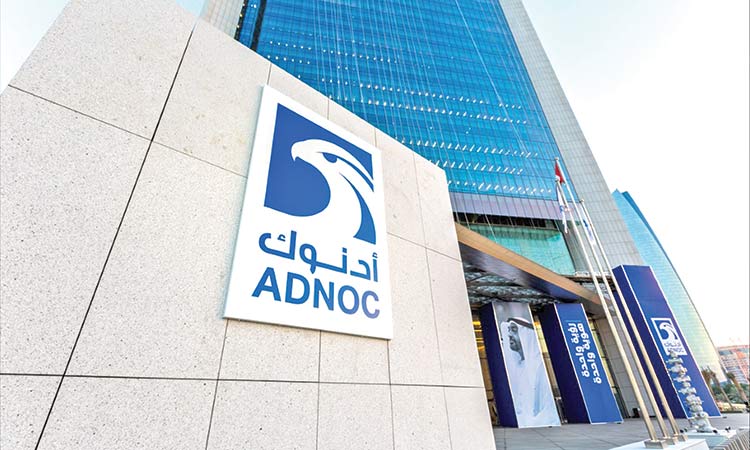Sensex closes 140 points higher amid record volatility
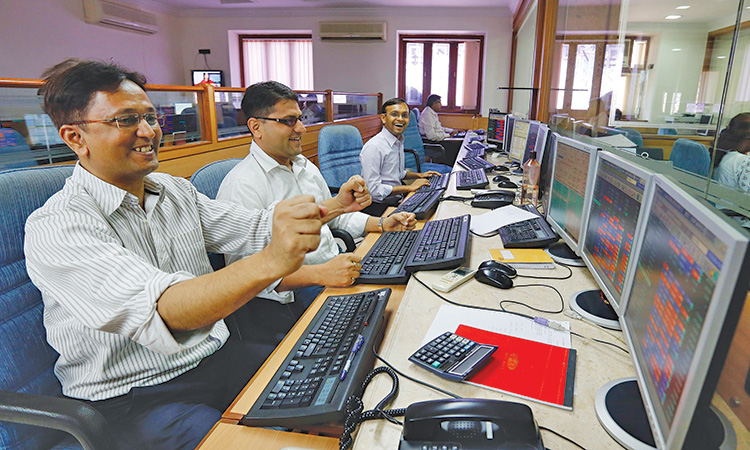
Brokers celebrate as they watch the Bombay Stock Exchange (BSE) index in Mumbai. Associated Press
The India VIX or the fear gauge shot up to 30.18, a four year high level as the euphoria around the exit polls seemed dying down.
Index gains came on the back of banking and financial stocks, while IT, FMCG and Nifty media index ended lower.
The BSE Sensex ended 140.41 points or 0.36 per cent higher at 39,110.21. The markets shuttled over 345 points between the high of 39,249.08 and a low of 38,903.87. The broader Nifty ended at 11,737.90, up 28.80 points or 0.25 per cent.
“Volatility index shot to four year high just ahead the big event. Valuation is expensive depicting the risk of the market to handle such event risk, long-term investors can stay cautious,” said Vinod Nair, Head of Research, Geojit Financial Services.
“Actual outcome in-line with the exit poll will be a relief to the market in the short-term. Formation of a government with strong mandate will support the undercurrent by foreign inflows.”
Dewan Housing Finance (DHFL) scrips tanked over 17 per cent on the BSE but ended 9.43 per cent lower after the company said it would neither accept new deposits nor allow premature withdrawals.
The beleaguered Jet Airways gained over 5.17 per cent, the top gainers on the Sensex were IndusInd Bank, Sun Pharma and Tata Motors (DVR).
Among the losers were Yes Bank, ITC, TCS, and Power Grid which fell in the 1 to 3 per cent range.
Meanwhile, the Finance Ministry may ask the Reserve Bank of India (RBI) to put strong regulatory framework around NBFCs accessing non-bank public deposits, like pension and provident fund, as these are savings of the salaried class and must be kept away from avoidable risks like infrastructure NBFCs.
Faced with liquidity crunch after IL&FS default and with rising number of defaults, the shadow bankers are seeking a bailout in the form of a separate liquidity window. But any decision on this would require detailed discussions, sources said.
According to Finance Ministry sources, though non-banking financial companies (NBFCs) are major finance providers, they are at present in deficit. “Their sources of funds are the market, not public. There has to be greater granularity in their liquidity requirements vis-a-vis the assets and liabilities, and the RBI will look into that.”
Remarking that there are asset-liability mismatches in some cases, sources said, “only the infrastructure-funding NBFCs need a separate credit window. Public deposit is not the option, in case of such NBFCs.”
According to another source, retirement and insurance funds are hard-earned money of the middle class saved for twlight years and emergencies. “Such savings should not be invested in markets, where the risks are unseen and sudden and the hope for higher returns may sometimes result in exemplary losses, as seen in the case of IL&FS, where after losing money the middle class investors looked up to the government for recovery.”
Even the Employees Provident Fund Organisation (EPFO), sources said, could pull back from NBFC investments to avoid default risks.
The EPFO’s Finance, Investment and Audit Committee (FIAC), at its meeting earlier this month, “alerted by the downgrading of certain NBFCs sought steps to avoid default and loss of money” to ensure safety of workers’ retirement savings.
Following this, the Finance Ministry is monitoring the EPFO and what it plans to do with investments in troubled NBFCs, such as Dewan Housing Finance Limited (DHFL).
Earlier this month, CARE Ratings downgraded the DHFL borrowings, which included long-term bank facilities, a fixed deposit programme, perpetual debt, subordinated debt and non-convertible debentures (NCDs). DHFL is a housing finance company worth Rs 1.13 trillion.
The CARE action came just three days after rating agency Crisil downgraded the Rs 850 crore DHFL commercial papers.
Last year, the NBFCs had petitioned the Prime Minister saying ‘systemically important’ NBFCs should be allowed to access public deposits and even demanded a separate RBI credit line.
But it would not be easy for the RBI to tighten or close a key source of funding − comprising insurance, provident and pension funds − for a sector already facing fund crunch to avoid future default risks.
At best, it can ask managers of such public funds to seek early re-payment from troubled NBFCs.
Mutual funds are another source of NBFC funding, but they are pure market instruments. Though insurance regulator IRDAI has not yet sought details of insurance companies’ exposure to DHFL, insurers have slowed investments in NBFCs.
Indo-Asian News Service
